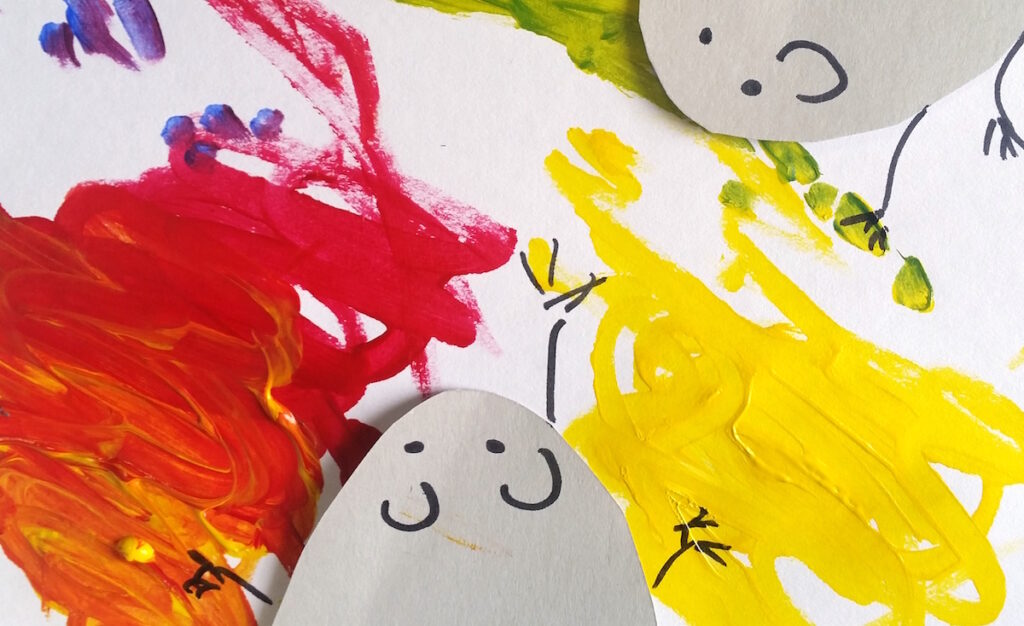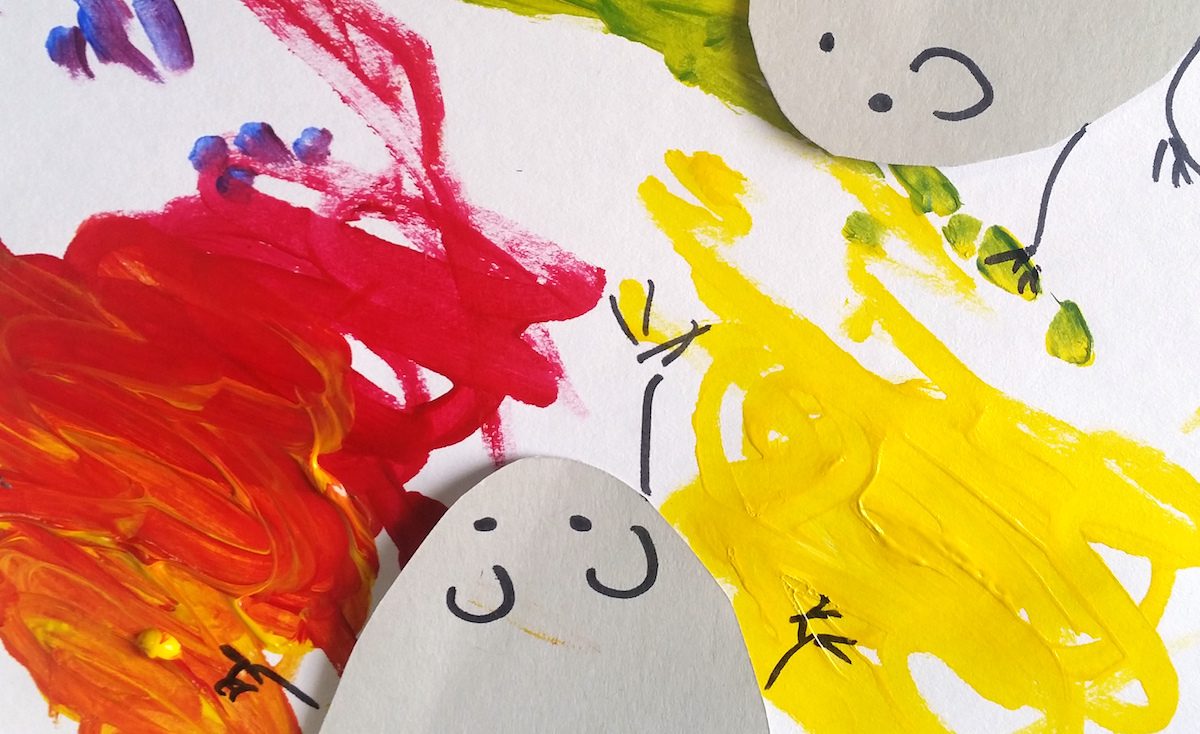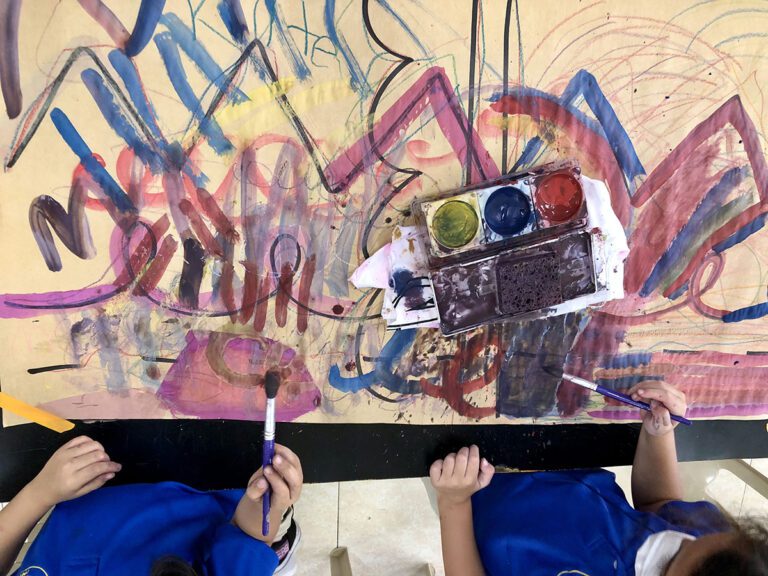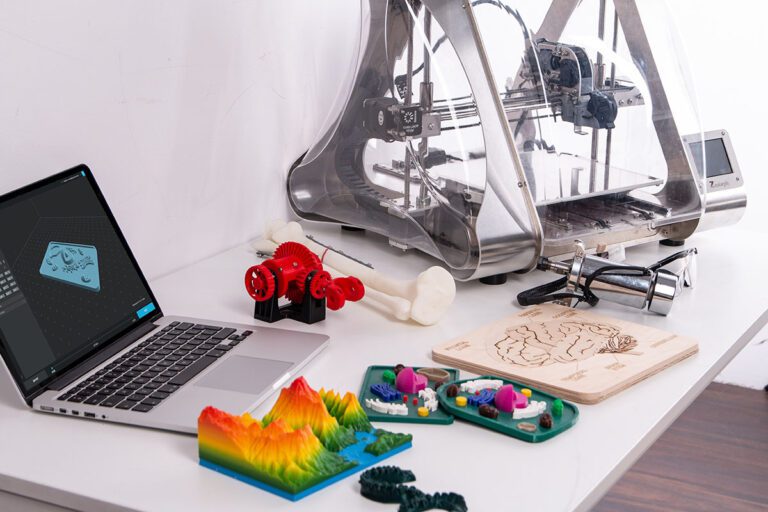As a student teacher, I was all about projects. My supervising teacher had so many I wondered where all of her ideas came from. I was so proud of myself when I came up with an idea for a project based on the book, Mouse Paint. “We’ll read it,” I thought, “then I’ll give them little Q-tips to be feet and tails.” I did just that, spending three whole classes reading the book, having kindergartners mix little piles of paint with Q-tips and create tiny mice out of pre-cut parts.

The work was adorable. Everyone said so, though you probably know this because you’ve seen something similar. I kept doing this project, year after year as a new teacher. I loved the way the work turned out, but it was always a struggle to make sure no students over mixed their paint and got too much brown. Later in the year when we painted again, I was always surprised when so few remembered the color theory I’d taught. “These kids!” I’d think, shaking my head.
Looking back on this experience years later it’s strikingly clear: it wasn’t the kids – it was my teaching.
Specifically, it was my focus on projects, which I define as artwork designed by the teacher to achieve a specific visual result. Projects vary from highly teacher-directed (sometimes referred to as “cookie cutter”) to more open ended, but they are all planned by the teacher with the end product in mind.
After six years of teaching, I changed my instructional practices.
No longer did I pre-cut little mouse bodies or walk my students through each step. Instead, I asked questions and let my students answer them through their work.
My color theory instruction followed this model and focused on exploration. I’d show the group at the paint center how to use the bright primary colors of paint filling the edges of my muffin tin trays, then ask “What color can you make?” and let them experiment. Often the first result would be a pile of brown, but the next week they remembered the experience and built on it.

After a few weeks, my youngest students were paint-mixing masters, creating colors like sea green, dark gray, and petal pink all from primaries and white. They did not forget what they’d learned. Instead, they applied it to mix any color they needed for the painting they were working on. They became experts, teaching anyone who needed advice at the painting center and having lively conversations about color.
It turns out kids need independent practice to apply learning.
I realized when had I planned the steps in a project for my students, I made them dependent on me. To really see what our students know and can do we need to teach new ideas and challenge students to apply them in artwork with no predetermined end product, to explore and construct meaning instead of replicating our examples.
When I analyze my teaching, it’s no surprise my kindergartners didn’t remember how to mix orange or green or purple from participating in the project I planned; that’s not really what the the experience was about. If I’m honest, it was about making a copy of a book cover.
Lasting learning happens from taking in new information, then applying it independently because this requires problem-solving and deep thinking about new concepts. It allows students to connect new knowledge to personal experiences.
Comparatively, following the steps of a project is less rigorous and requires much less analysis and creative thinking on the part of the student artist. This is why it’s time to move on from projects and start challenging kids to apply concepts in artmaking based on their own ideas, not on ours. If you think this will waste supplies or student work will suffer, consider this; the real waste is a beautiful project it took weeks to finish and a room full of kids who don’t know how to mix colors.
What do you think? Is it time to get rid of projects or are they still valuable?
Magazine articles and podcasts are opinions of professional education contributors and do not necessarily represent the position of the Art of Education University (AOEU) or its academic offerings. Contributors use terms in the way they are most often talked about in the scope of their educational experiences.





